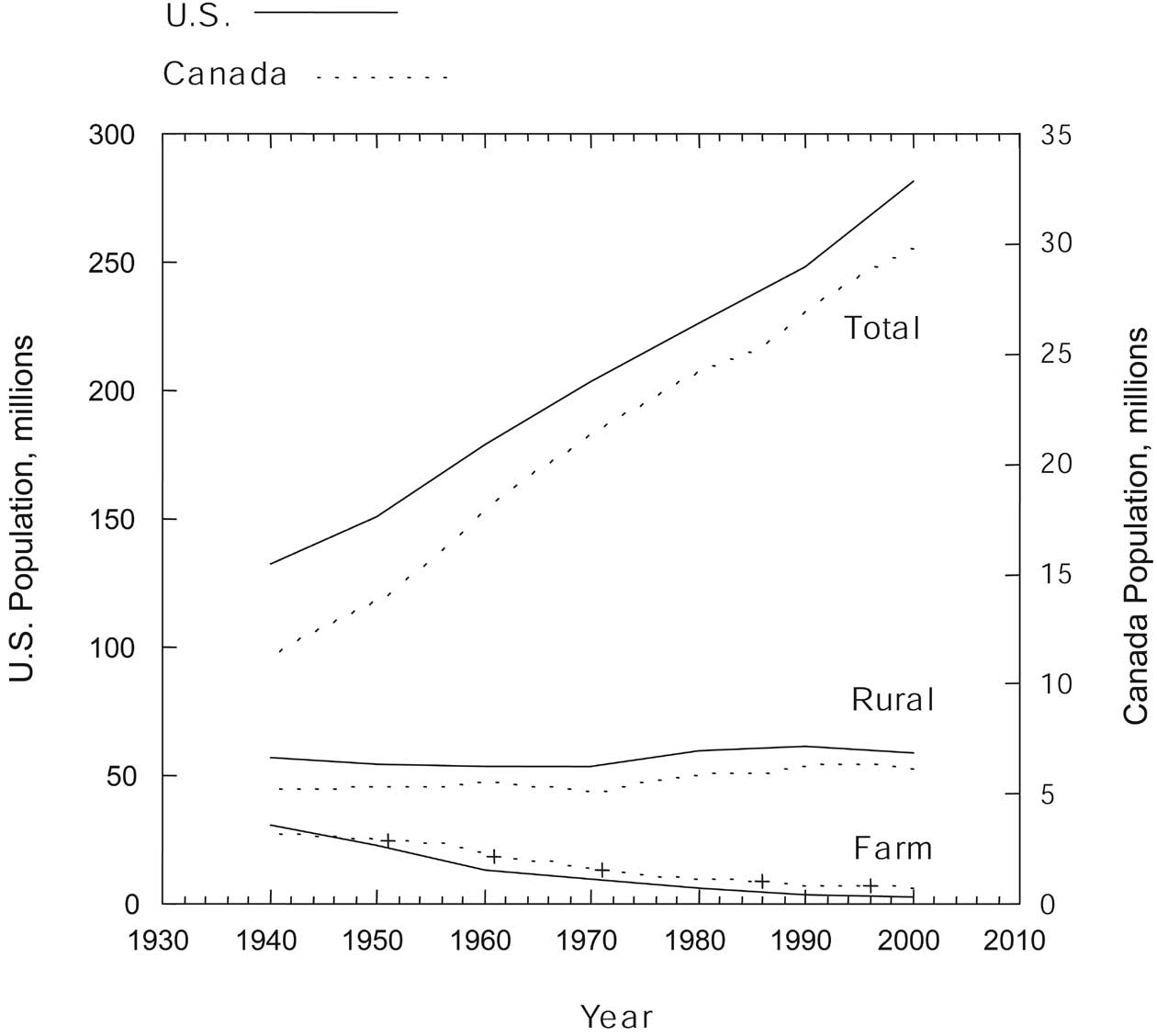
| Previous | Return to table of contents | Search Reports | Next |
| « Back to weltagrarbericht.de | ||
Changes in Agriculture and Food Production in NAE Since 1945 | 27

Figure 2-4. Total change in rural and farm populations in North America from 1930-2000. Source: USDA data; author elaboration. |
||
Vogel, 2003). Along with the variation of the size of the hired workforce among countries, there is also considerable variation between different sectors of agriculture and a concentration of demand for hired workers in vegetable, fruit and horticulture systems (Frances et al., 2005). The seasonality in these sub-sectors has encouraged the use of temporary workforces, but the nature of this workforce has itself been in flux for the last fifty years as conditions in the industry have changed. Temporary work in agriculture continues to require minimal skills and be physically demanding with poor pay and poor work conditions. |
|
(1986), which instituted the Special Agricultural Worker program and two guest worker programs (H-2A and Replenishment Agricultural Worker). These were intended to provide a legal work force that could join unions and result with better border control in reducing illegal immigration and creating better working conditions for the legal agricultural labor force (Martin, 2002). These objectives have not been realized given that in the first part of the decade an estimated 50% of all hired workers in crops and livestock farming, 25% in meat processing and 17% in food services are undocumented or unauthorized workers (Wells and Villarejo, 2004; Passel, 2005; Simonetta, 2006). These changes have also been happening in the context of the influence on international migration of the North American Free Trade Agreement (NAFTA), which came into force in 1994, although it did not formally include labor mobility as part of the framework agreement. The economic changes wrought by NAFTA have shifted relative economic power between the signatories to the agreement with differential effects on migration and on relative wage levels occurring among Mexico, USA and Canada (Canales, 2000; Aydemir and Borjas, 2007). 2.1.2 Changes in European farming and rural populations |
| Previous | Return to table of contents | Search Reports | Next |
| « Back to weltagrarbericht.de | ||